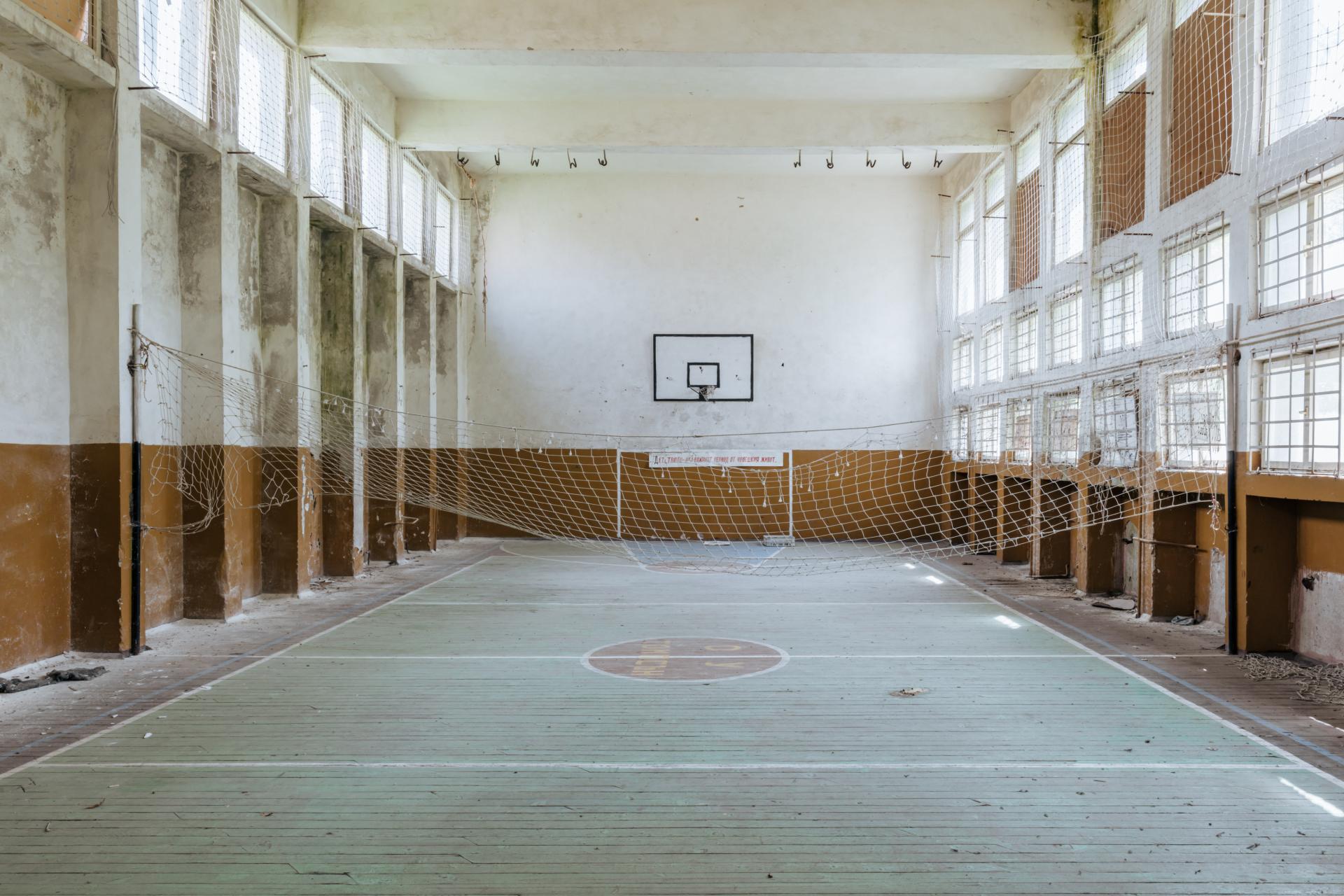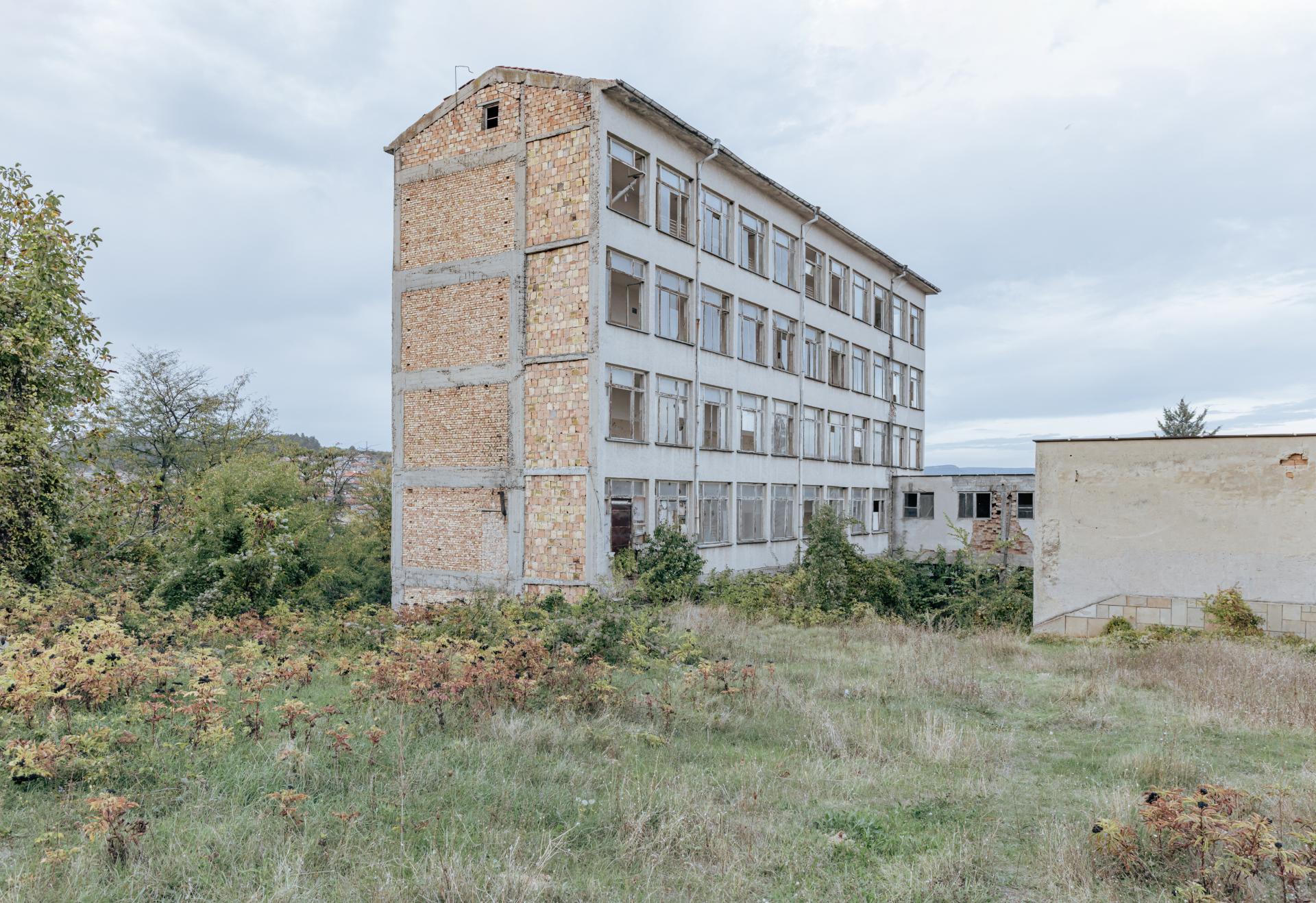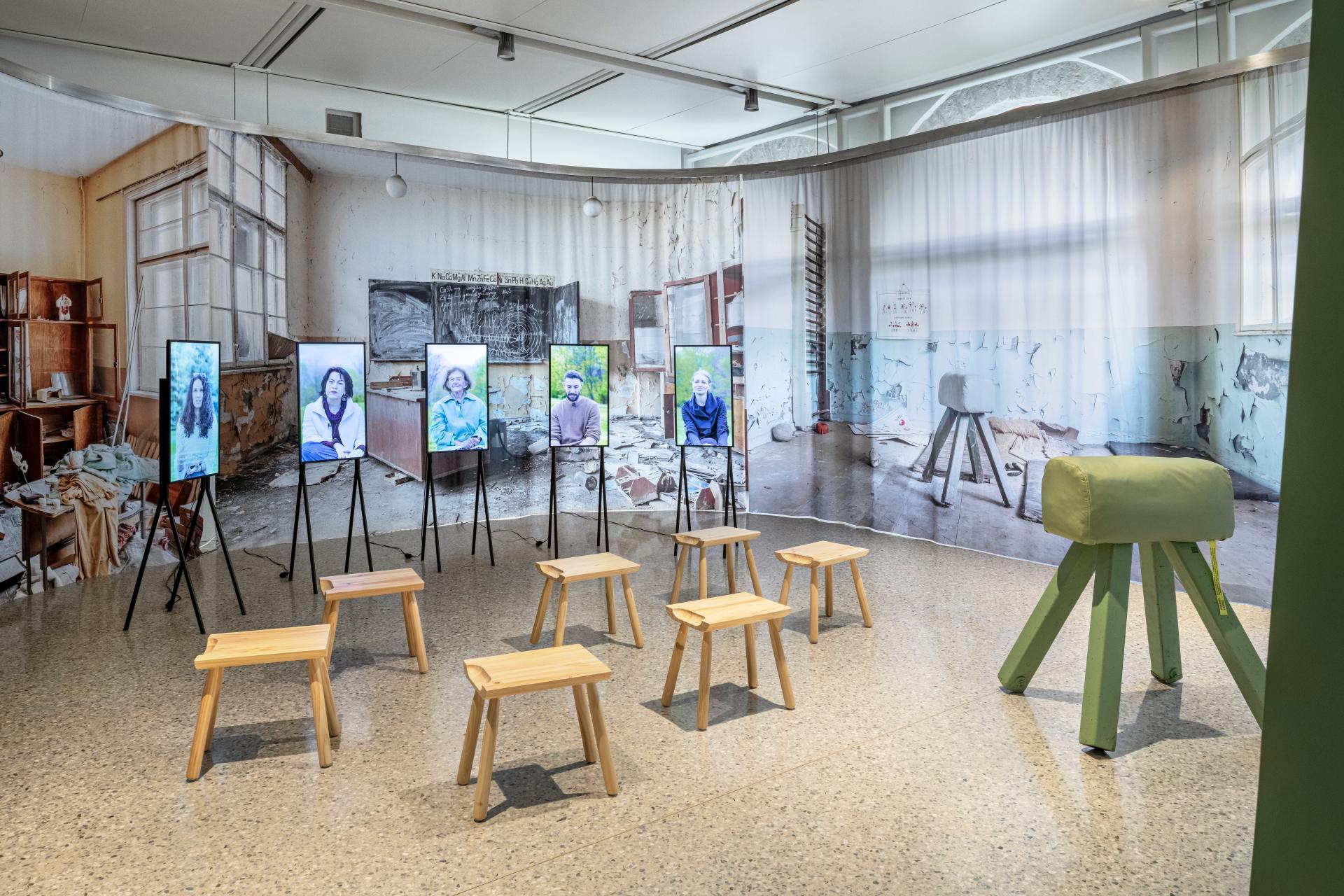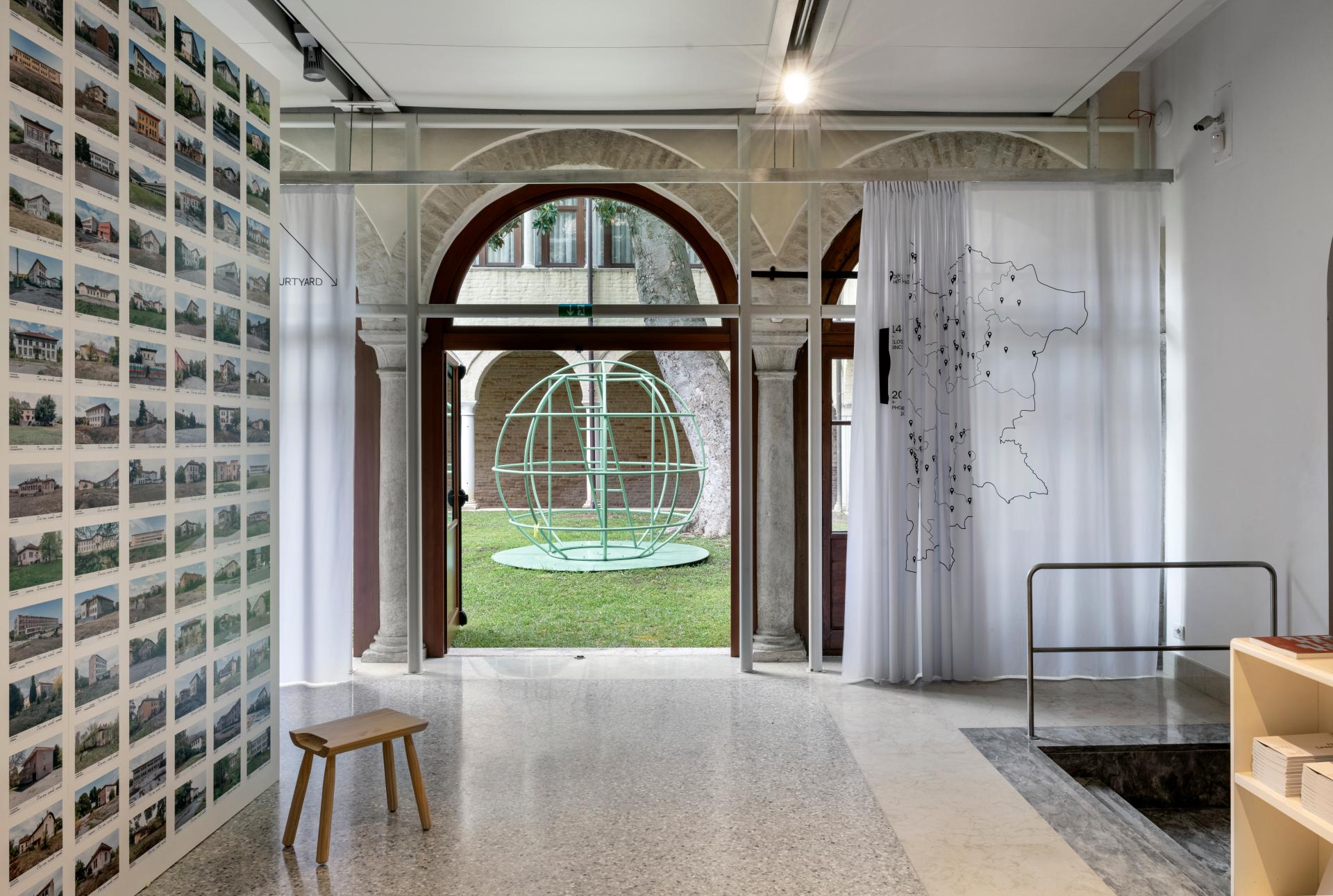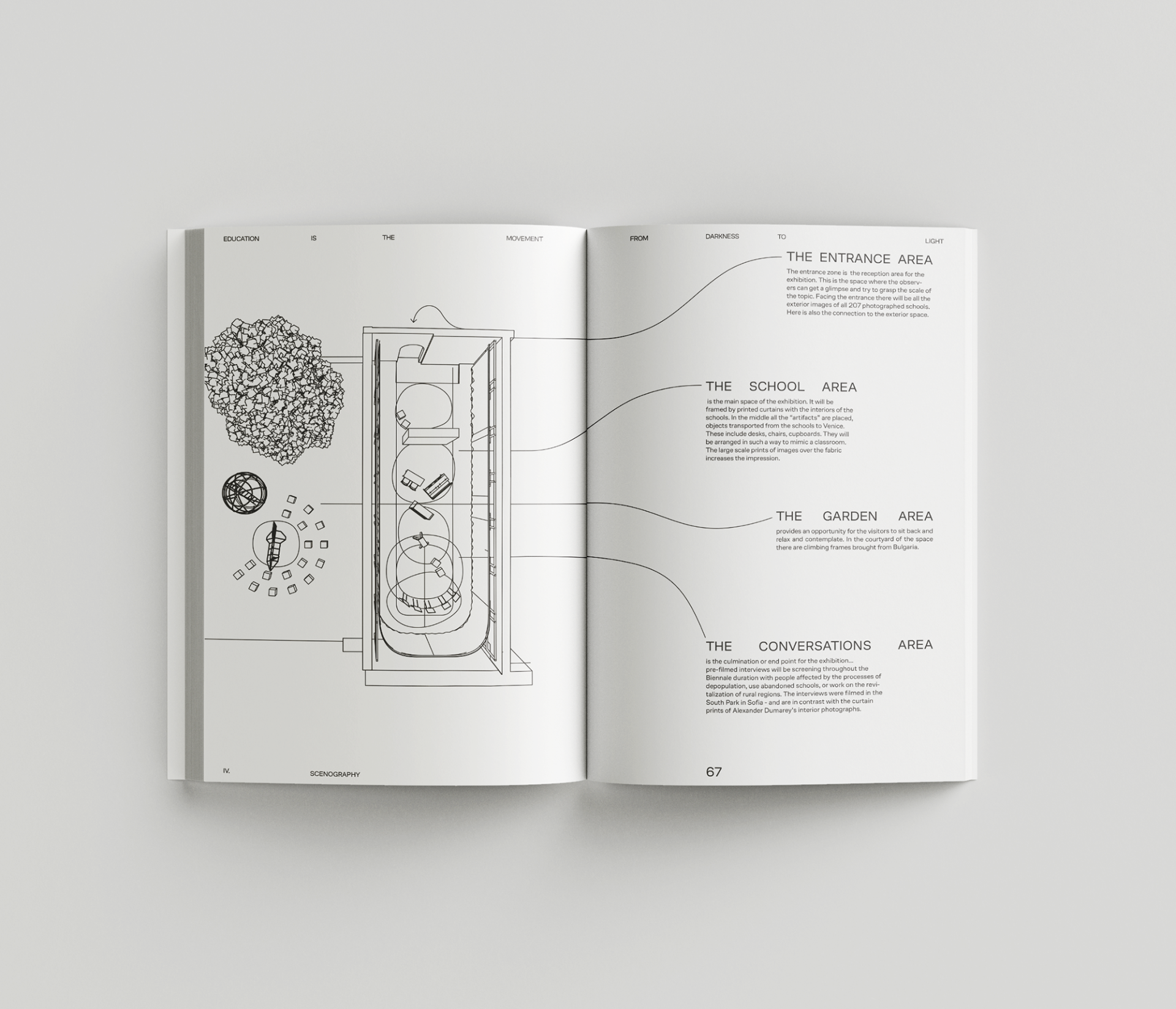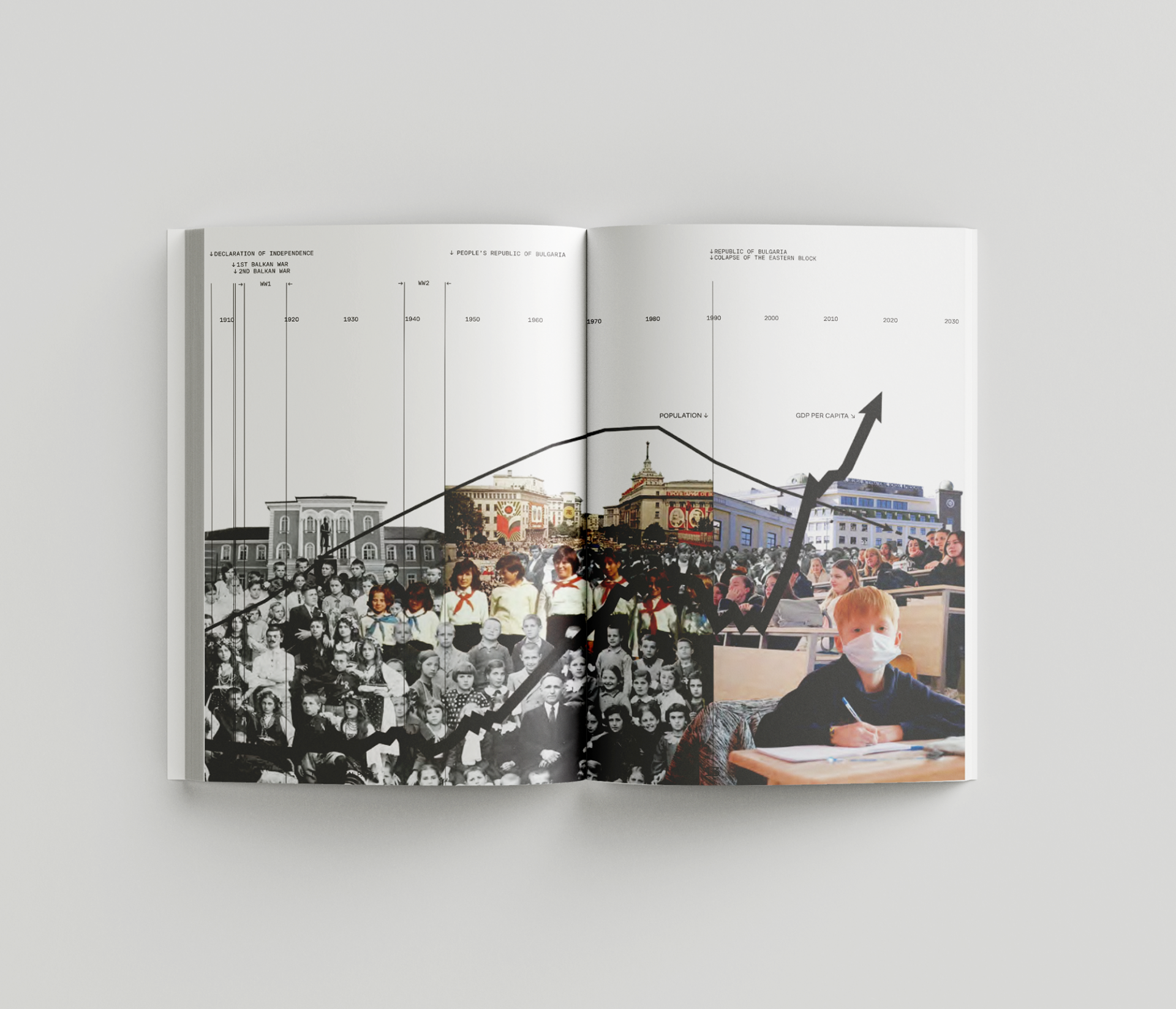From darkness to light
Basic information
Project Title
From darkness to light
Full project title
Education is the movement from darkness to light
Category
Prioritising the places and people that need it the most
Project Description
"From Darkness to Light"is a research project and exhibition design for the 2023 Venice Architecture Biennale. The study is based on the photographic series "Uchilishte" by Alexander Dumarey, a Belgian documentary photographer.
The pavilion explores the problems caused by the demographic catastrophe and tries to develop tools to minimise their effect. Follow up steps have been identified and the focus will shift to collection and publicly sharing information on the abbandoned schools.
The pavilion explores the problems caused by the demographic catastrophe and tries to develop tools to minimise their effect. Follow up steps have been identified and the focus will shift to collection and publicly sharing information on the abbandoned schools.
Geographical Scope
National
Project Region
Bulgaria
Urban or rural issues
Mainly urban
Physical or other transformations
It refers to other types of transformations (soft investment)
EU Programme or fund
No
Description of the project
Summary
During the past 30 years the population of Bulgaria is rapidly shrinking, there are many factors contributing to that - migration, high mortality and low birth rates. One of the consequences is that there are fewer and fewer children to attend school, leading to several schools closing doors each year.
The project was using the work of the Belgian Photographer Alexander Dumarey as a base and the main goal was to present the country at the Venice Architecture Biennale 2023.
One of the main goals of the project was to create awareness and to give a real life image to the demographic catastrophe. The following exhibition was viewed by more than 20 000 visitors and was televised and communicated over multiple media outlets both internal and external.
During the period of the biennale we managed to collaborate with the University of Architecture Civil Engineering and Geodesy in Sofia and organised the summer internship program collecting data, not only for the presented more than 200 photographed and documented schools, but trying to establish the total number of shut down school buildings in Bulgaria.
As a follow up stage we will continue with the data collection process and have the ambition to create an interactive publicly accessible map. We want to build a tool to help us make informed strategies and really see these empty buildings with their potential and multiple possibilities either as restoration or as remodel projects.
The project was using the work of the Belgian Photographer Alexander Dumarey as a base and the main goal was to present the country at the Venice Architecture Biennale 2023.
One of the main goals of the project was to create awareness and to give a real life image to the demographic catastrophe. The following exhibition was viewed by more than 20 000 visitors and was televised and communicated over multiple media outlets both internal and external.
During the period of the biennale we managed to collaborate with the University of Architecture Civil Engineering and Geodesy in Sofia and organised the summer internship program collecting data, not only for the presented more than 200 photographed and documented schools, but trying to establish the total number of shut down school buildings in Bulgaria.
As a follow up stage we will continue with the data collection process and have the ambition to create an interactive publicly accessible map. We want to build a tool to help us make informed strategies and really see these empty buildings with their potential and multiple possibilities either as restoration or as remodel projects.
Key objectives for sustainability
Sustainability is a cornerstone of the project and is deeply embedded in our agenda from the beginning. The construction industry is the second major polluter after the oil and gas sector.
Shifting the focus of the general public from new construction to preservation, promoting reconstruction projects on national and international level is essential for reducing the CO2 emissions within the sector.
Creating the school database and placing the issue in the public scope is a first step to reviving smaller communities and promoting life outside of busy urban environments. We hope that the consequences of our project will strengthen the porous network of smaller villages and improve the quality of habitation in the affected areas. Stimulating a more balanced relationship between cities and smaller settlements and decentralising institutional and cultural life, will improve the quality of life and can potentially be more sustainable in the long run.
On the smaller scale, our exhibition is a 0 waste and production enterprise, All the elements of the exhibition are borrowed or will be reused. We have been granted with public school furniture and climbing frames that are no longer used(again because of demographic issues). After the end of the Biennale they will be returned. All technical equipment will be used in following exhibitions and eventually be gifted to companies to continue their life.
All curtains will be reused and the exhibition will continue to travel. Afterwards the curtains will be sold and the money donated for causes related to the project.
Shifting the focus of the general public from new construction to preservation, promoting reconstruction projects on national and international level is essential for reducing the CO2 emissions within the sector.
Creating the school database and placing the issue in the public scope is a first step to reviving smaller communities and promoting life outside of busy urban environments. We hope that the consequences of our project will strengthen the porous network of smaller villages and improve the quality of habitation in the affected areas. Stimulating a more balanced relationship between cities and smaller settlements and decentralising institutional and cultural life, will improve the quality of life and can potentially be more sustainable in the long run.
On the smaller scale, our exhibition is a 0 waste and production enterprise, All the elements of the exhibition are borrowed or will be reused. We have been granted with public school furniture and climbing frames that are no longer used(again because of demographic issues). After the end of the Biennale they will be returned. All technical equipment will be used in following exhibitions and eventually be gifted to companies to continue their life.
All curtains will be reused and the exhibition will continue to travel. Afterwards the curtains will be sold and the money donated for causes related to the project.
Key objectives for aesthetics and quality
Aesthetics are always subjective. Designing the exhibition, catalogue and website were more utilitarian tasks. Information had to be clearly and directly delivered to the observer. The project’s goal was to reach as many people as possible. However in its core the pavilion is based on the work of an art series. This exhibition can exist in Venice both as an art work but also as an architectural study. The border between aesthetics and functionality are blurred and diluted.
This was an interdisciplinary achievement and our team tried to employ highly skilled professionals to be responsible for each design task. The result is fitting with the artistic qualities of the photographs of Alexander Dumarey.
This was an interdisciplinary achievement and our team tried to employ highly skilled professionals to be responsible for each design task. The result is fitting with the artistic qualities of the photographs of Alexander Dumarey.
Key objectives for inclusion
The project aims at addressing neglected topics and casting light over issues that have remained outside of the general public’s focus. There is this incredible number of empty public buildings, and in most cases they are being sold and developed by private developers. The topic is universal and relatable to everyone.
The Venice Biennale has been criticised for being an elitist event, and its contribution is currently under scrutiny for doing more harm than good to the city of Venice. With our project we tried to address this by opening the pavilion to every visitor, distributing our catalogue for free, engaging a wider public and creating a public space in the courtyard of the pavilion for the residents and visitors of the city. We wanted to create a quiet space where people can rest and enjoy the courtyard and kids can play. We have transported 2 climbing frames from schools in Bulgaria, not being used by kids anymore, and placed them in Venice, making them available for the kids and parents living in the neighbourhood.
Throughout the development of the project a incredibly diverse group of people were invited to work alongside the core team and contribute. Designers, architects, thinkers, artists, scholars, academics, sociologists and so on. The team was interdisciplinary, transnational with various backgrounds, united through the work.
The Venice Biennale has been criticised for being an elitist event, and its contribution is currently under scrutiny for doing more harm than good to the city of Venice. With our project we tried to address this by opening the pavilion to every visitor, distributing our catalogue for free, engaging a wider public and creating a public space in the courtyard of the pavilion for the residents and visitors of the city. We wanted to create a quiet space where people can rest and enjoy the courtyard and kids can play. We have transported 2 climbing frames from schools in Bulgaria, not being used by kids anymore, and placed them in Venice, making them available for the kids and parents living in the neighbourhood.
Throughout the development of the project a incredibly diverse group of people were invited to work alongside the core team and contribute. Designers, architects, thinkers, artists, scholars, academics, sociologists and so on. The team was interdisciplinary, transnational with various backgrounds, united through the work.
Results in relation to category
The pavilion has been visited by more than 20 000people for the duration of the exhibition. The project has been featured on television, radio, newspapaers and digital media outlets, national and international. The pavilion has been shared on multiple specialised websites and magazines.
We have been in contact with various institutions private and governmental discussing follow up steps. There are currently 2 following exhibitions in progress. We have received requests for collaborations on similar topics and there has been interest shown by several universities willing to continue the work further on the topic.
We have been in contact with various institutions private and governmental discussing follow up steps. There are currently 2 following exhibitions in progress. We have received requests for collaborations on similar topics and there has been interest shown by several universities willing to continue the work further on the topic.
How Citizens benefit
As part of the exhibition we filmed a series of interviews with people from different communities. Each of them is involved in some way in the revival of certain villages and in particular in the renovation of its schools. The interviews are on display in the pavilion during the whole duration of the Biennale.
We involved several municipalities in the project by collecting equipment from abandoned schools and exhibiting them in the pavilion. After the end of the Biennale they will be returned to the villages/towns and put on display with additional information about the project.
Overall the most important impact the project has on the local communities is spreading key information and raising awareness of the problem of depopulation in these areas and the need of taking action upon.
We involved several municipalities in the project by collecting equipment from abandoned schools and exhibiting them in the pavilion. After the end of the Biennale they will be returned to the villages/towns and put on display with additional information about the project.
Overall the most important impact the project has on the local communities is spreading key information and raising awareness of the problem of depopulation in these areas and the need of taking action upon.
Physical or other transformations
It refers to other types of transformations (soft investment)
Innovative character
Because of the short deadlines and the multiple parties involved we were forced to work on the project from several different locations. The process was not going to be possible without the advantages provided by the technological advancements.
The work was difficult and relied heavily on complicated logistical planning between the core team, outside collaborators, governmental institutions, multiple advice councils, and the biennale team. The fact that we managed to open the exhibition on time and within the budget constraints, without sacrificing elements of the initial competition design is mostly because of the digital and communication tools we had available at our disposal.
The project itself explores advantages in the educational process, within the content of the catalogue. As part of the solution to preserve these buildings we have studied and researched tools for digital mapping of existing structures, also testing them on location and also made the model available online.
We are planning to employ digitalisation tools in the following stages of the project. We see these tools as essential to our process and have done a lot to incorporate them in our workflow.
The work was difficult and relied heavily on complicated logistical planning between the core team, outside collaborators, governmental institutions, multiple advice councils, and the biennale team. The fact that we managed to open the exhibition on time and within the budget constraints, without sacrificing elements of the initial competition design is mostly because of the digital and communication tools we had available at our disposal.
The project itself explores advantages in the educational process, within the content of the catalogue. As part of the solution to preserve these buildings we have studied and researched tools for digital mapping of existing structures, also testing them on location and also made the model available online.
We are planning to employ digitalisation tools in the following stages of the project. We see these tools as essential to our process and have done a lot to incorporate them in our workflow.
Disciplines/knowledge reflected
The subject we tackle is multidisciplinary and involves citizens, architects, government and local authorities. So far we have discussed possible solutions with people from all those groups - informally and on official events. During these talks there is an emerging agenda, that is still a draft, but we have the ambition to develop it further.
Together with it we are planning a research project that will include the same groups. It is going to be an interactive map with all abandoned schools.
Together with it we are planning a research project that will include the same groups. It is going to be an interactive map with all abandoned schools.
Methodology used
The project uses images of abandoned schools as a metaphor to open the discussion on the demographic crisis, but also other topics. The exhibition is accessible and easy to understand, the goal was to maximise exposure and reach to a wider audience.
During the period that the exhibition was open we managed to collaborate with the University of Architecture Civil Engineering and Geodesy in Sofia and organised a summer research project cataloguing and listing all of the schools that have closed during the last 30 years.
We hope that the university will pick up the topic and develop assignments and continue the exploration of the abandoned schools through their potential.
Working in close collaboration with governmental institutions, researchers and contractors was challenging and we had to be really creative in moderating between all of the actors in the process.We have communicated remotely, supervised on site and managed the processes in close collaboration with all of the involved parties.
During the period that the exhibition was open we managed to collaborate with the University of Architecture Civil Engineering and Geodesy in Sofia and organised a summer research project cataloguing and listing all of the schools that have closed during the last 30 years.
We hope that the university will pick up the topic and develop assignments and continue the exploration of the abandoned schools through their potential.
Working in close collaboration with governmental institutions, researchers and contractors was challenging and we had to be really creative in moderating between all of the actors in the process.We have communicated remotely, supervised on site and managed the processes in close collaboration with all of the involved parties.
How stakeholders are engaged
During the 6 months of the exhibition many people contacted us asking for information and guidance on how to approach certain projects or cases involving abandoned schools. In the preliminary phase of the project we had already approached several organisations and municipalities that had already completed such projects so we made the connection between them.
We also organised several discussions on the subject with international participation. The people involved were from different backgrounds and working fields.
The pavilion has become a platform for exchanging experience and information.
We also organised several discussions on the subject with international participation. The people involved were from different backgrounds and working fields.
The pavilion has become a platform for exchanging experience and information.
Global challenges
Depopulation of rural areas is a global phenomenon and the problems it leads to are universal. The solutions though, are not. They are contextual to the specific society and the strategies should be based on research of the local situation.
Learning transferred to other parties
The exhibition was designed in a way that it can be adapted easily to different spaces so that it can continue after the end of the Biennale. In fact it will be placed again in December at a local art centre in Sofia, Bulgaria. The adaptation is taking minimal resources.
Keywords
depopulation
countryside
schools
reconstruction
awareness

